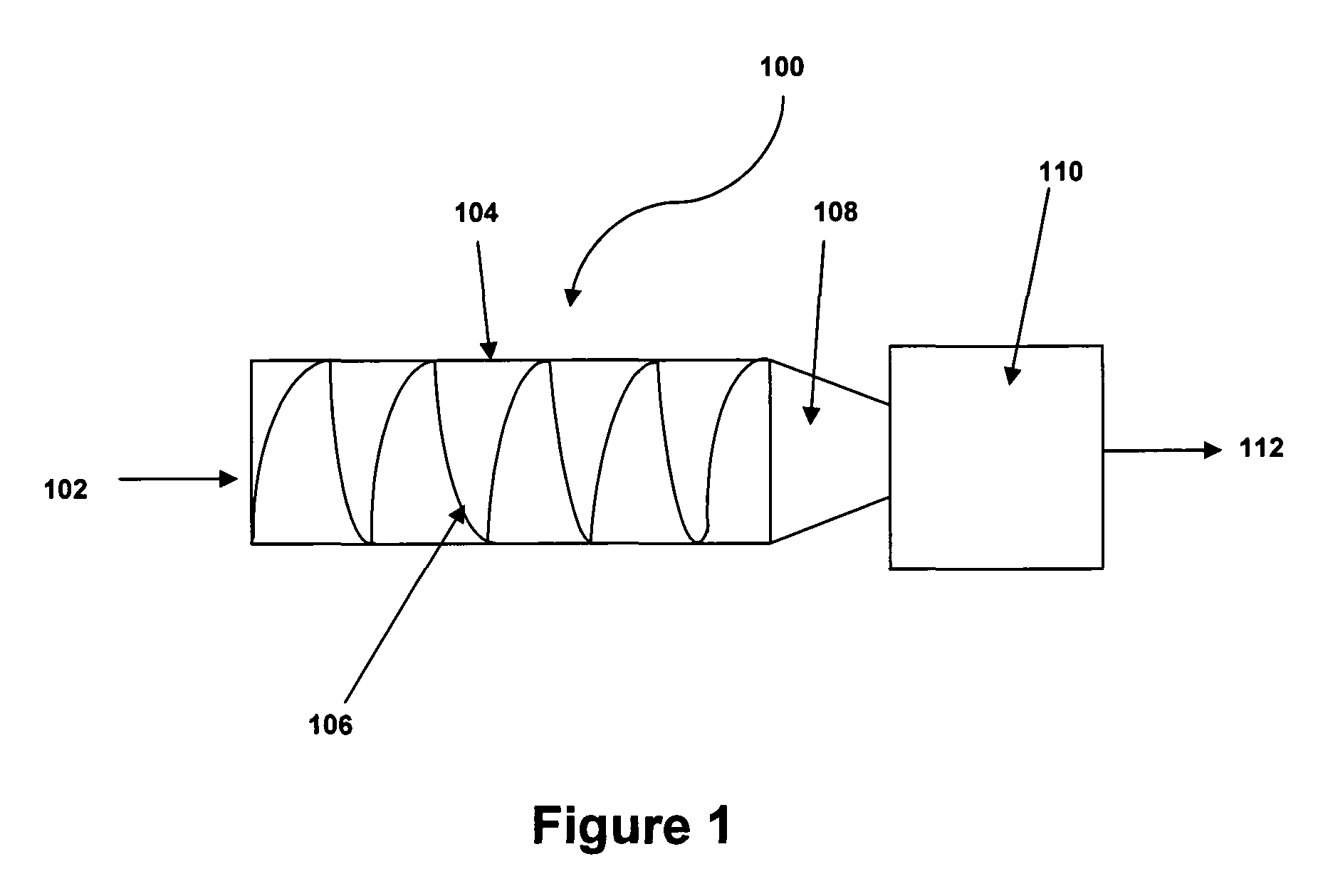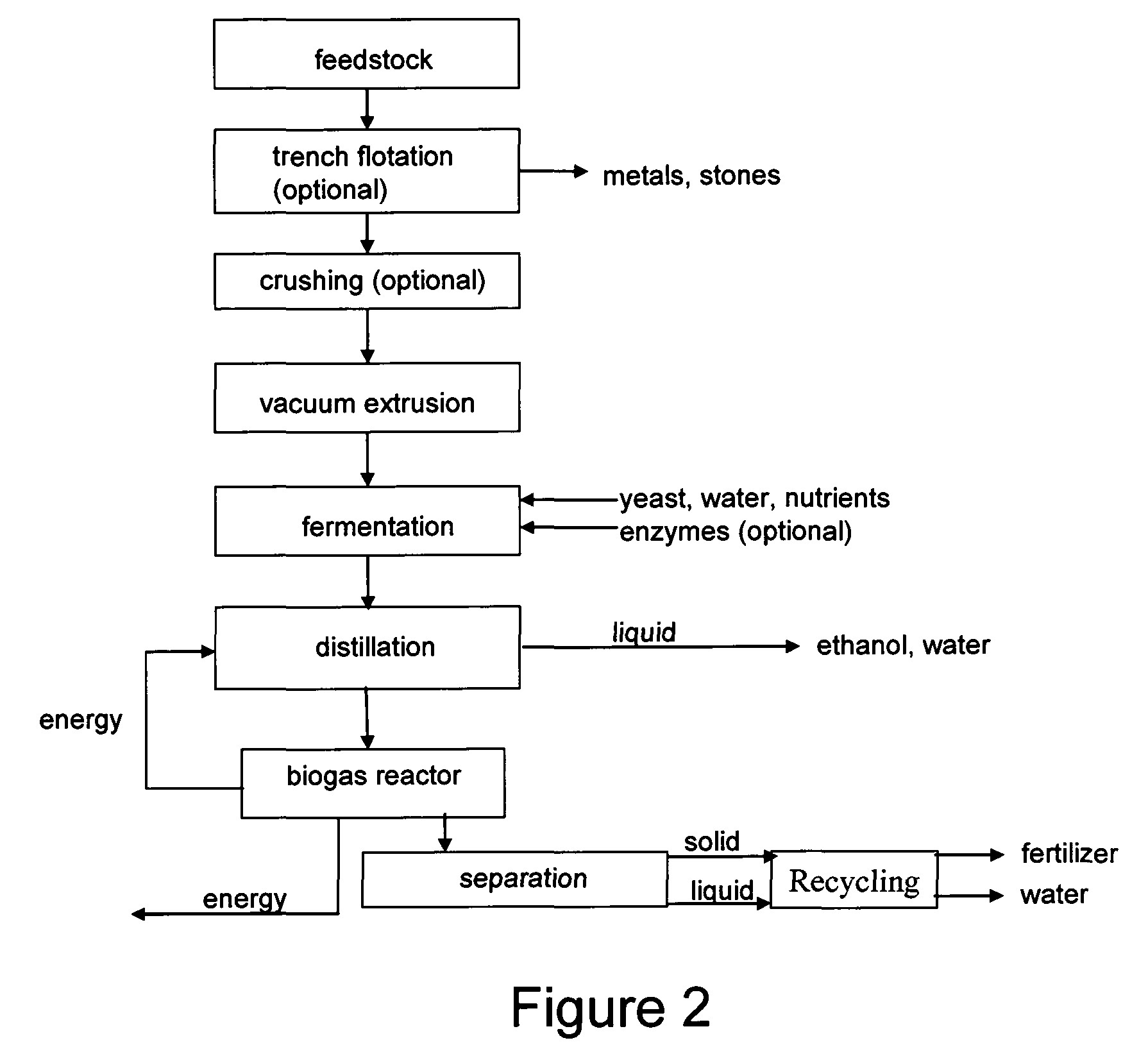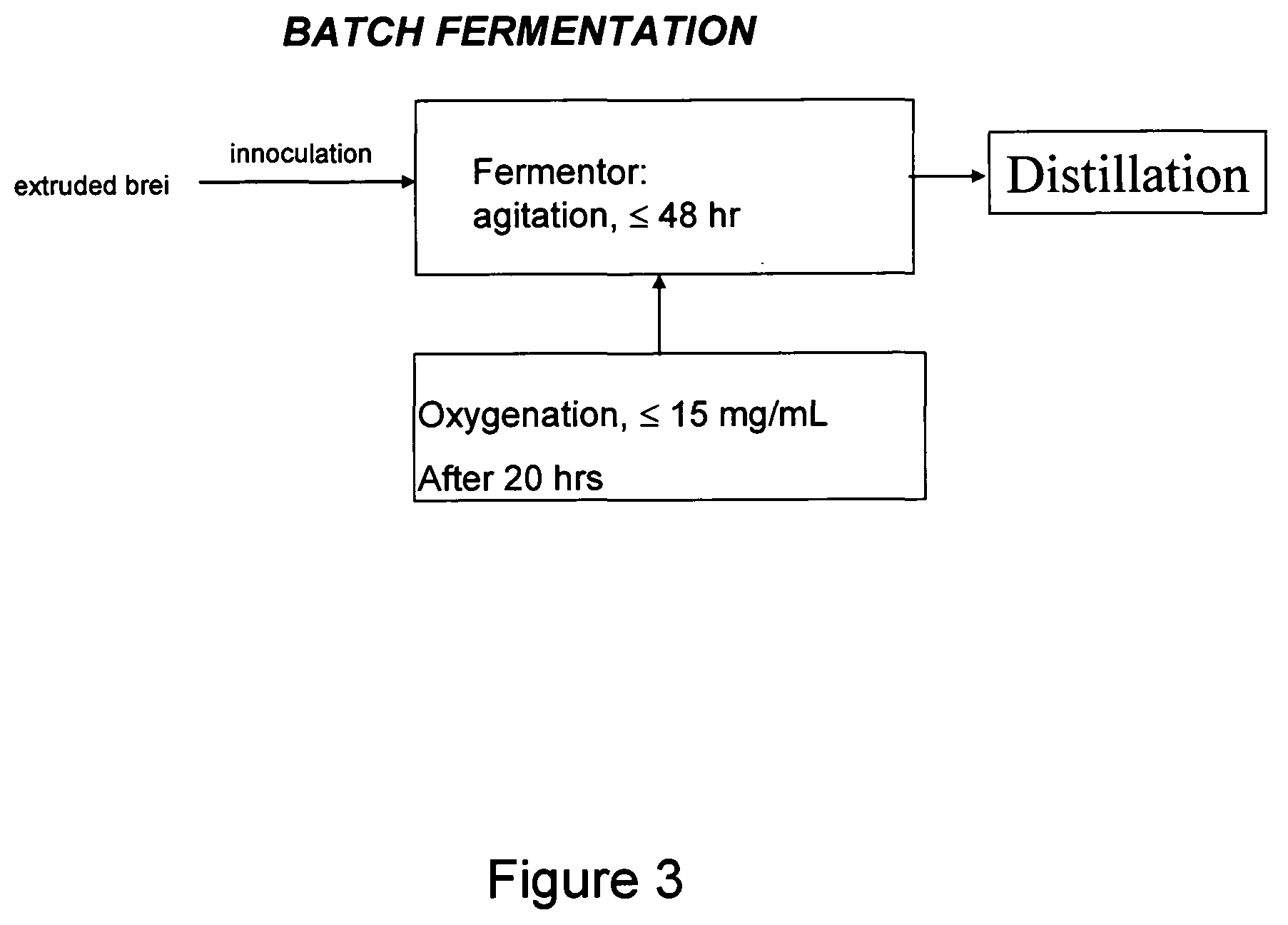Process for providing ethanol from plant material
a technology of plant material and ethanol, which is applied in the direction of sugar juice production, biochemistry apparatus and processes, biochemistry apparatus, etc., can solve the problem of significant energy costs to achieve the effect of heating needed
- Summary
- Abstract
- Description
- Claims
- Application Information
AI Technical Summary
Benefits of technology
Problems solved by technology
Method used
Image
Examples
example 1
Sugar Beet to Ethanol Production
[0170]Sugar beets having 14% sugar content were harvested, defoliated, and stored outdoors. Prior to use, the beets, including beets that were damaged or that had rotted during storage, were pre-washed in a container filled with water. A diagonal auger was inserted into the pre-wash container and served to transport the sugar beets to a conveyor, where stones were picked out. The beets were crushed and subjected to a two-step compression and decompression procedure to disrupt the beet cell walls and provide extruded beet material (i.e., treated brei), which was collected in stainless steel tanks and mixed, as described below, with water, activated yeast, yeast nutriment and, in some cases, one or more enzymes, and fermented. For comparison, beet brei that had not been subjected to the two-step compression and decompression vacuum extrusion procedure (i.e., untreated brei) was also used in two of the fermentation mixtures. This untreated material consi...
example 2
Results of Sugar Beet to Ethanol Production
[0180]The fermentation conditions and ethanol content produced in fermentation mixtures 1-8 described in Example 1 are shown in Table 1 below.
[0181]The ethanol yield from vacuum-treated sugar beet brei fermented at a temperature between 33-35° C. was between 9.5 and 10.6%. At fermentation temperatures above 33° C., 90% of the ethanol was produced within the first 20 hours. Treated sugar beet brei fermented at 25° C. resulted in a 0.5% by volume reduction in ethanol production. As shown by the results from mixture 1, ethanol yield is not negatively influenced by a lack of enzymes, although the use of at least 25 g / hl PECTINEX™ served to liquefy the brei, making it easier to ferment and to simplify handling.
[0182]Compared to the treated beet brei, sugar beet brei that had not been transformed using vacuum extrusion generated lower ethanol yields (see mixtures 5 and 6) of 9.0% at a fermentation temperature of 25° C. and 9.3% at a fermentation ...
example 3
Comparison of Ethanol Yield from a Conventional Process to Ethanol Yield from a Vacuum Extrusion Process
[0184]Theoretical yield of Ethanol from Sugar Beet: One ton of sugar beets having a sugar content of 14% contains 140 kg of sugar.
[0185]The conversion of glucose to ethanol can be expressed by the equation:
[0186]180 g of glucose=92 g EtOH+88 g CO2+23.5 calories; which gives a sugar to ethanol conversion factor of 0.51. The specific density of EtOH is 1.25 g / L. Thus, the potential or theoretical EtOH yield after fermentation of all available sugar in one ton of sugar beets having 14% sugar content would be 71.4 kg (89.25 liters) of EtOH.
[0187]Conventional Juice Extraction Process (as used in a beet-sugar factory with sliced sugar beet and hot water diffusion): The raw sugar beet juice after traditional extraction processes contains about 90% of the total initially available sugar, giving 126 kg of available sugar for fermentation. Based on the sugar to ethanol conversion factor of ...
PUM
| Property | Measurement | Unit |
|---|---|---|
| pressure | aaaaa | aaaaa |
| temperatures | aaaaa | aaaaa |
| pressure | aaaaa | aaaaa |
Abstract
Description
Claims
Application Information
 Login to View More
Login to View More - R&D
- Intellectual Property
- Life Sciences
- Materials
- Tech Scout
- Unparalleled Data Quality
- Higher Quality Content
- 60% Fewer Hallucinations
Browse by: Latest US Patents, China's latest patents, Technical Efficacy Thesaurus, Application Domain, Technology Topic, Popular Technical Reports.
© 2025 PatSnap. All rights reserved.Legal|Privacy policy|Modern Slavery Act Transparency Statement|Sitemap|About US| Contact US: help@patsnap.com



